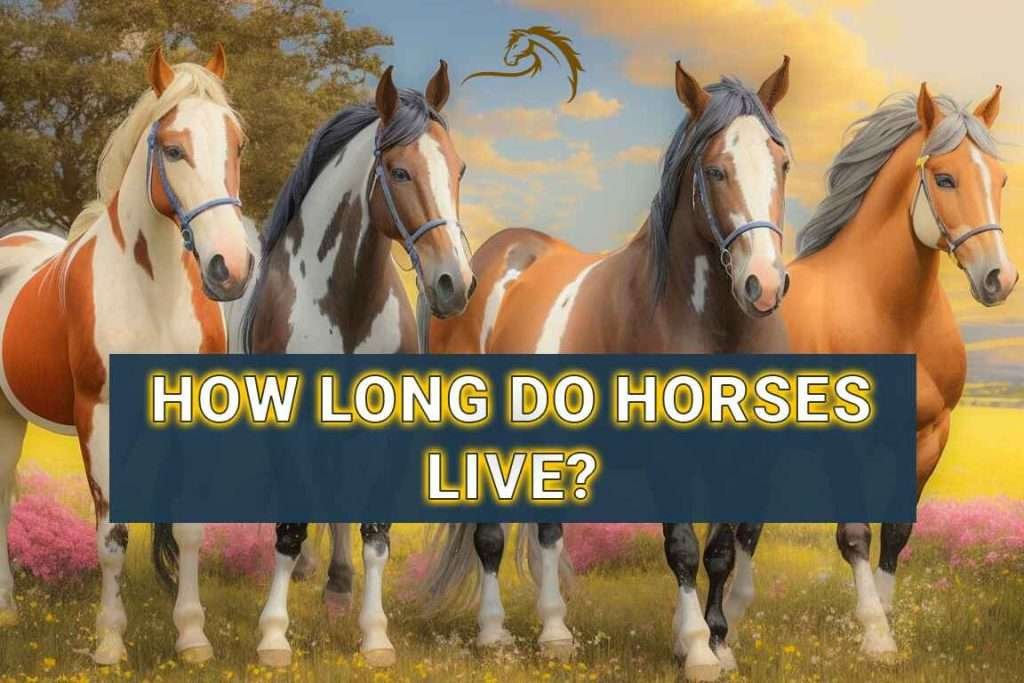The average lifespan of a domesticated horse is 25 to 30 years, with some individuals even reaching their 50s or 60s with proper care. However, several factors can influence a horse’s lifespan. Horses are long-term commitments, and their lifespan significantly impacts the responsibilities and considerations associated with their care. With a clear understanding of how long horses typically live, you can make informed decisions about equine health, nutrition, exercise, and overall quality of life. I would say it is a majestic creature.
Horse’s Lifespan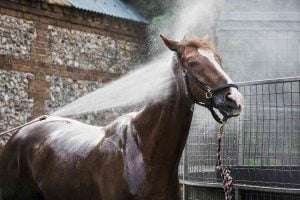
Let’s say you’re a new horse owner or an experienced equestrian, with an understanding of the typical lifespan of a horse helps you create appropriate care strategies and provide the necessary resources for their well-being. It also enables you to anticipate the financial commitments involved in caring for horses throughout their lifespan. Several factors influence a horse’s lifespan, and it’s important to consider them when assessing their overall well-being and potential longevity.
Genetics and Breed:
Each horse breed has its average lifespan, which can vary significantly. Genetic factors and breed-specific characteristics can impact their susceptibility to certain health conditions and affect their overall lifespan.
 Nutrition and Diet:
Nutrition and Diet:
Proper nutrition is vital for a horse’s health and longevity. A balanced horse diet that meets their specific nutritional requirements ensures optimal growth, development, and immune function, promoting a longer and healthier life.
Exercise and Fitness: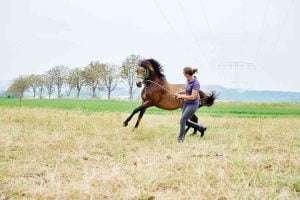
Regular exercise and physical activity are crucial for a horse’s overall well-being and lifespan. Adequate exercise helps maintain a healthy weight, promotes cardiovascular health, and supports musculoskeletal strength and flexibility.
 Healthcare and Veterinary Care:
Healthcare and Veterinary Care:
Timely and regular veterinary care plays a significant role in a horse’s lifespan. Routine vaccinations, dental care, deworming, and preventative measures against diseases help maintain their health and identify any potential issues early on.
Environment and Living Conditions:
A safe and suitable living environment is essential for a horse’s well-being and lifespan. Providing adequate shelter, clean water (make sure that the horse trough is free from any dirt and worms), proper pasture, and protection from extreme weather conditions helps prevent stress-related health issues and ensures their comfort and safety.
These factors can help you make informed decisions about their care and allow you to provide the appropriate nutrition, exercise, veterinary care, and living conditions necessary for their well-being and longevity.
Remember, while these factors play a significant role, each horse is unique, and their lifespan can be influenced by individual circumstances. By combining general knowledge with personalized care and attention, you can enhance a horse’s quality of life and ensure they enjoy a long and fulfilling journey by your side.
Average Lifespan of Horses – Range
 The average lifespan of a horse can vary depending on several factors. On average, horses live between 25 and 30 years, although some horses have been known to live well into their 30s and even 40s. It’s important to note that individual horses may fall outside this range due to various influences.
The average lifespan of a horse can vary depending on several factors. On average, horses live between 25 and 30 years, although some horses have been known to live well into their 30s and even 40s. It’s important to note that individual horses may fall outside this range due to various influences.
|
Year Range
|
Breeds | ||||
| Thoroughbred | Quarter Horse | Shetland Pony | Arabian | ||
|
Average
Lifespan (Years) |
1943-1957 | 32 | 30 | 38 | 28 |
| 1958-1972 | 31 | 29 | 36 | 26 | |
| 1973-1987 | 30 | 28 | 34 | 24 | |
| 1988-2002 | 29 | 27 | 32 | 22 | |
| 2003-2017 | 28 | 26 | 30 | 20 | |
| 2018-2023 | 27 | 25 | 28 | 18 | |
What Affects the Lifespan of a Horse
There are many factors involved in affecting the life span of a horse, let’s discuss a few briefly:
Breeds
Different horse breeds have varying average lifespans. Some breeds are known for their longevity, while others may have shorter lifespans due to genetic factors. It’s essential to research and understand the typical lifespan of the specific breed you own or work with.
Type
Size and body type can also impact a horse’s lifespan. Generally, larger horse breeds tend to have shorter lifespans compared to smaller breeds. Additionally, factors such as conformation and body condition play a role in a horse’s overall health and longevity.
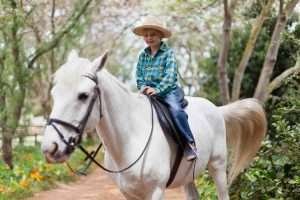 Good Care
Good Care
The care and management practices you implement for your horse can significantly influence its lifespan. Providing proper nutrition, regular exercise, and a safe living environment are essential. Routine hoof care, dental check-ups, and appropriate vaccinations and deworming protocols also contribute to a horse’s overall health and longevity.
Valuable Diet
A well-balanced and nutritionally adequate diet is crucial for a horse’s well-being and lifespan. Horses should have access to high-quality forage, such as grass or hay, and may require additional supplements to meet their specific nutritional needs. Consult with a veterinarian or equine nutritionist to develop a feeding plan tailored to your horse’s requirements.
 Exercise
Exercise
Regular exercise and an appropriate activity level promote physical fitness and mental well-being in horses. Exercise helps maintain muscle tone, cardiovascular health, and joint flexibility. However, it’s important to strike a balance and avoid excessive or strenuous exercise that may lead to injuries or wear and tear on the horse’s body.
Proper Veterinary Care
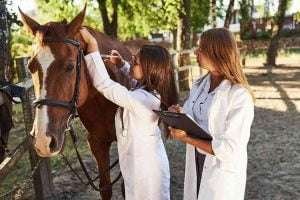 Timely and regular veterinary care is essential for maintaining a horse’s health and extending its lifespan. Routine check-ups, vaccinations, dental care, and preventive measures against common equine diseases are crucial. Regular deworming and parasite control protocols should also be followed to protect the horse from internal parasites.
Timely and regular veterinary care is essential for maintaining a horse’s health and extending its lifespan. Routine check-ups, vaccinations, dental care, and preventive measures against common equine diseases are crucial. Regular deworming and parasite control protocols should also be followed to protect the horse from internal parasites.
 Environmental Factors
Environmental Factors
The environment in which a horse lives can impact its overall health and lifespan. Providing a safe and well-maintained living space, appropriate shelter, and access to clean water is vital. Protecting horses from extreme weather conditions, providing proper ventilation, and minimizing exposure to harmful substances or toxic plants are additional considerations.
Providing the best possible environment with appropriate care strategies for horses’ well-being can help increase their lifespan. Please note that each horse is unique, and their circumstances may influence their lifespan. Regular monitoring, observation, and consultation with equine professionals can help ensure your horse enjoys a long, healthy, and fulfilling life.
The Lifespan of Different Horse Breeds
Equine lifespan depends upon multiple factors but as discussed above their lifespan depends upon their circumstances. The lifespan of horses can vary significantly across different breeds. While the average lifespan of horses falls within the range of 25 to 30 years, specific horse breeds may have longer or shorter lifespans based on various factors.
Long-Lived Horse Breeds
Arabian:

Arabian horses are renowned for their remarkable endurance and longevity. They have a reputation for living well into their 30s and even reaching their 40s. This exceptional lifespan is one of the distinguishing features of the Arabian breed. The Arabian horse is highly regarded for its overall health and robustness, which contribute to its ability to thrive and enjoy a long life.
The longevity of Arabian horses can be attributed to a combination of factors. Firstly, Arabian horses have a strong genetic foundation that has been carefully preserved over centuries, allowing for the selection of individuals with exceptional health and vitality. Additionally, the breed’s inherent hardiness and adaptability enable them to withstand various environmental conditions and challenges.
Arabian horses are known for their efficient metabolism and efficient nutrient utilization, which support their long-term health and longevity. They possess well-developed cardiovascular and respiratory systems, allowing them to maintain stamina and endurance even in demanding activities. The breed’s overall soundness and predisposition to good health make them less susceptible to age-related ailments.
It is important to note that while Arabian horses are generally long-lived, individual lifespan can still be influenced by factors such as proper care, nutrition, exercise, and access to quality veterinary care. Responsible horse ownership and providing a suitable environment for the horse’s physical and mental well-being are essential for maximizing their lifespan and overall quality of life.
Morgan:
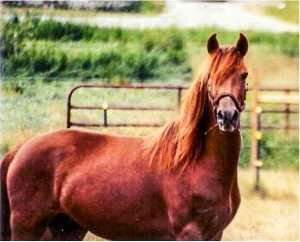
Morgan horses are a distinguished breed known for their versatility, intelligence, and longevity. With an average lifespan of 25 to 30 years, Morgans are known to live relatively long and healthy lives. This breed’s endurance and adaptability contribute to their longevity, allowing them to thrive in various disciplines and environments.
The Morgan breed originated in the United States and holds a rich history dating back to the late 18th century. Throughout the years, Morgans have maintained their characteristic strength, athleticism, and soundness. Their compact build, well-muscled bodies, and expressive eyes are distinctive features that exemplify their breed standard.
Morgan horses are renowned for their versatility and excel in a wide range of disciplines, including driving, dressage, endurance riding, and ranch work. Their intelligence and willingness to please make them trainable and suitable for riders of various skill levels. Their sound conformation and strong work ethic contribute to their overall longevity and ability to perform well into their senior years.
Morgans often develop strong bonds with their owners and demonstrate unwavering loyalty and devotion. Their gentle nature and affectionate demeanor make them cherished companions, whether in the show ring or as pleasure horses. The breed’s adaptability and versatility, combined with their longevity, make Morgan horses a beloved choice for equestrians seeking a lifelong partnership.
Andalusian:
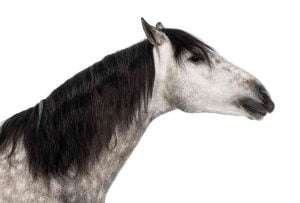
The Andalusian horse, also known as the Pure Spanish Horse or Pura Raza Española (PRE), is a majestic and elegant breed known for its beauty, versatility, and longevity. With an average lifespan of 25 to 30 years, Andalusians are known to live relatively long and healthy lives.
Originating from the Iberian Peninsula, the Andalusian breed has a rich history dating back thousands of years. These horses have been prized throughout history for their regal appearance, athletic abilities, and gentle temperament. They are renowned for their strong, well-muscled bodies, arched necks, and expressive eyes, which contribute to their unmistakable beauty.
Andalusians possess a natural elegance and grace that is enhanced by their forward-leaning posture. This distinctive trait, often referred to as “impulsion,” gives them a majestic and proud appearance. Whether in motion or standing still, Andalusians captivate onlookers with their striking presence.
Known for their versatility, Andalusians excel in various disciplines, including dressage, show jumping, driving, and working equitation. They are known for their collection, agility, and willingness to perform intricate movements. Their strong work ethic, combined with their athleticism and trainability, allows them to excel in both competitive arenas and leisurely pursuits.
Andalusians are beloved for their calm and intelligent nature, making them suitable for riders of different skill levels. Their cooperative attitude and willingness to learn contribute to their success in training and their ability to form deep bonds with their owners. Their regal and noble demeanor, coupled with their enduring spirit, make Andalusians a breed admired by equestrians worldwide.
Horse Breeds with Shorter Lifespan
 Thoroughbred:
Thoroughbred:
The Thoroughbred horse is a breed renowned for its speed, athleticism, and competitive spirit. While the Thoroughbred’s primary focus is often on racing, these remarkable horses also have a notable lifespan, typically ranging from 25 to 30 years.
Thoroughbreds trace their lineage back to the 17th century in England, where they were selectively bred for their speed and agility. Over the centuries, the breed has been refined and developed, resulting in the exceptional athletes we see today. Thoroughbreds are known for their sleek and muscular bodies, long legs, and deep chests, all of which contribute to their exceptional speed and endurance.
Due to their breeding and genetic makeup, Thoroughbreds are known for their competitive nature and drive to succeed on the racetrack. Their high energy levels and natural athleticism make them well-suited for racing, where they can showcase their speed and power. However, Thoroughbreds are also versatile and can excel in other equestrian disciplines such as show jumping, eventing, and dressage.
Thoroughbreds can live well into their 20s and even 30s with proper care and management. Many retired racehorses go on to lead fulfilling lives in various disciplines or as pleasure horses. With regular veterinary care, a balanced diet, and a supportive environment, Thoroughbreds can enjoy a long and healthy life beyond their racing years.
Thoroughbreds are cherished for their intelligence, sensitivity, and willingness to please. They form strong bonds with their human partners and thrive on the companionship and attention they receive. Whether on the racetrack or in other equestrian pursuits, Thoroughbreds are known for their work ethic and desire to perform their best, making them beloved by trainers, riders, and enthusiasts alike.
The Thoroughbred breed’s contribution to the world of horse racing and equestrian sports is immeasurable. Their speed, agility, and competitive spirit have captivated audiences for centuries. With their notable lifespan, Thoroughbreds continue to leave a lasting impression both on and off the track, showcasing their enduring nature and remarkable abilities.
Draft Breeds:
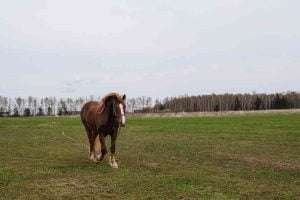
Draft breeds, also known as heavy horse breeds, are known for their immense size, strength, and gentle temperament. These magnificent horses have a notable lifespan, typically ranging from 20 to 30 years.
Draft breeds have a rich history deeply rooted in their work as powerful and dependable working horses. They were traditionally bred for tasks such as plowing fields, pulling heavy loads, and transporting goods. Today, while their role in heavy labor has diminished, they are still highly regarded for their versatility and are often seen in various equestrian disciplines, including driving, showing, and even recreational riding.
One well-known draft breed is the Clydesdale, originating from Scotland. Clydesdales are celebrated for their distinctive feathered feet, strong build, and graceful movements. Another notable draft breed is the Percheron, which hails from France. Percherons are known for their intelligence, willingness to work, and elegant appearance.
Draft horses are characterized by their substantial size, with some individuals reaching heights of over 17 hands and weighing more than a ton. Their muscular build, broad chests, and strong legs enable them to excel in tasks that require pulling heavy loads. Despite their impressive stature, draft horses are often gentle giants, known for their docile temperament and willingness to cooperate with their handlers.
With proper care, nutrition, and regular veterinary attention, draft horses can enjoy a long and healthy life. Their size and strength often make them resilient and well-suited to handle physical demands. However, it is essential to provide them with appropriate exercise, a balanced diet, and a comfortable living environment to support their overall well-being.
Draft breeds hold a special place in the hearts of horse enthusiasts around the world. Their impressive presence, gentle nature, and remarkable work ethic have made them beloved companions, whether in rural farming settings or modern equestrian pursuits. Their longevity allows for meaningful and enduring partnerships with their human caretakers, providing years of joy, companionship, and admiration for their awe-inspiring capabilities.
Miniature Horses:

Miniature horses, despite their diminutive size, have a lifespan that is comparable to their larger equine counterparts. On average, miniature horses can live between 25 to 35 years, with some individuals even surpassing the 40-year mark. These small equines are highly valued for their charm, versatility, and gentle nature.
Originating from various countries around the world, miniature horses were initially bred for their compact size and appealing aesthetics. They have become popular as companion animals, therapy animals, and even competitive show horses. Their small stature makes them more accessible to people of all ages and abilities, allowing for a range of interactions and activities.
Miniature horses require proper care and attention to ensure their long and healthy lives. This includes providing them with a balanced diet, regular exercise, routine veterinary care, and a safe and stimulating living environment. While their size may be small, their nutritional needs and overall well-being should be treated with the same level of care as larger horse breeds.
One of the remarkable aspects of miniature horses is their ability to form strong bonds with their human caretakers. Their intelligence, affectionate nature, and willingness to learn make them excellent companions and therapy animals. They are often seen participating in animal-assisted therapy programs, providing emotional support and bringing joy to people of all ages.
Miniature horses come in a variety of colors and coat patterns, adding to their visual appeal. Their small size allows them to be easily transported, making them suitable for various activities such as parades, exhibitions, and even assistance animals. While their primary function may differ from that of larger horse breeds, miniature horses continue to leave a lasting impact on the lives of those who encounter them.
Note: We have discussed above many factors that a horse’s lifespan depends upon. So, it’s important to note that those individual factors can influence the lifespan of horses within each breed. Proper care, nutrition, and regular veterinary check-ups can help optimize a horse’s health and potentially extend its lifespan. So, we strongly recommend that regardless of breed, every horse owner should provide a loving and nurturing environment, coupled with appropriate health management, these will contribute to a horse’s overall well-being and maximize their lifespan.
Horse Aging Process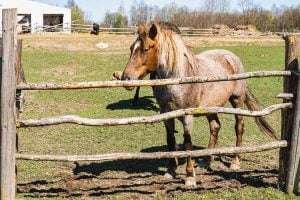
Horses, like humans, go through distinct life stages as they age. But with that much awareness, many horse owners forget this. So, it is strongly recommended that every horse owner should recognize the signs of aging and provide appropriate care and support on time. So a question arises here: What are the Aging Signs of a Horse’s entire Lifespan?
Foalhood:
Foalhood is a critical stage in a horse’s life that requires special attention and care from horse owners and caretakers. During this period, foals undergo rapid growth and development, and it is essential to provide them with the proper nutrition to support their healthy development.
 In the early stages of foalhood, foals rely on their mother’s milk for nourishment. This milk is rich in essential nutrients and antibodies that help boost their immune system. As they grow, their diet should gradually transition to include hay, grass, and a specialized foal feed that is specifically formulated to meet their nutritional needs. It’s important to ensure that the feed is of high quality and provides a balanced combination of proteins, vitamins, minerals, and energy sources.
In the early stages of foalhood, foals rely on their mother’s milk for nourishment. This milk is rich in essential nutrients and antibodies that help boost their immune system. As they grow, their diet should gradually transition to include hay, grass, and a specialized foal feed that is specifically formulated to meet their nutritional needs. It’s important to ensure that the feed is of high quality and provides a balanced combination of proteins, vitamins, minerals, and energy sources.
Regular monitoring of the foal’s weight and body condition is crucial to ensure they are receiving adequate nutrition. Consulting with a veterinarian or equine nutritionist can provide valuable guidance in formulating an appropriate feeding plan.
Foalhood is also a time for physical development and exercise. Foals naturally engage in play and exploration, which helps build their coordination, strength, and overall fitness. Providing a safe and spacious environment for them to move and exercise is important.
Regular veterinary check-ups, including vaccinations and deworming, are essential during foalhood to protect against common diseases and parasites. Routine hoof care, such as trimming, should also be performed to ensure proper hoof growth and soundness.
Yearling: The yearling stage in a horse’s life is an important transitional period between foalhood and adulthood. Yearlings experience significant physical and behavioral changes as they continue to grow and mature. Horse owners and caretakers must provide proper care, nutrition, and training during this developmental phase.
Nutrition plays a vital role in supporting the growth and development of yearlings. Their diet should consist of high-quality forage, such as hay and pasture, along with a balanced concentrate feed specifically formulated for young horses. This feed should contain essential nutrients, including protein, vitamins, and minerals, to support healthy bone and muscle development. Monitoring their body condition and adjusting their diet accordingly is important to ensure they are receiving adequate nutrition without becoming overweight.
Alongside nutrition, training, and socialization are essential aspects of yearling care. Yearlings should be introduced to basic handling and ground manners to establish a foundation for future training. Socializing yearlings with other horses is also important, as it promotes healthy herd dynamics and helps them develop appropriate social skills.
Regular exercise is crucial for the physical and mental well-being of yearlings. It helps build their strength, coordination, and cardiovascular fitness. Turnout in a safe and spacious pasture or paddock allows yearlings to move freely, play, and interact with other horses. Controlled exercises, such as hand-walking or lunging, can also be incorporated into their routine to further develop their physical abilities and responsiveness to commands.
Like foalhood, yearlings should receive routine veterinary care, including vaccinations and deworming, to protect against diseases and parasites. Regular dental examinations are also important to ensure proper dental development and identify any potential issues early on.
Adolescence: Adolescence is a crucial and sometimes challenging stage in a horse’s life. Just like human teenagers, adolescent horses go through physical and behavioral changes as they transition from foals to mature adults. Proper nutrition is key during adolescence to support the continued growth and development of the horse. They require a balanced diet that provides essential nutrients, including protein, vitamins, and minerals, to support healthy bone and muscle growth. Monitoring their body condition and adjusting their feed accordingly is essential to ensure they receive appropriate nutrition without becoming overweight or undernourished.
Adolescent horses may also exhibit more energetic and spirited behavior, as they explore their independence and test boundaries. Consistent and patient handling is crucial to establish trust, respect, and appropriate behavior. Continue building on the groundwork and training started during the foal hood and yearling stages, gradually introducing more advanced exercises and training techniques.
Exercise is important for adolescent horses to help them develop strength, coordination, and stamina. Regular turnout in a safe and spacious pasture allows them to move freely, interact with other horses, and engage in natural behaviors. Structured exercises, such as riding and lunging, can also be incorporated to further develop their physical abilities and responsiveness to cues.
Routine veterinary care remains crucial during adolescence. Regular check-ups, vaccinations, and dental examinations ensure their overall health and address any potential issues promptly. Adolescence is also the time when horses may undergo the process of castration (gelding) for male horses or addressing reproductive health for fillies.
Patience, consistency, and understanding are key when caring for adolescent horses.
Adulthood: Horses reach adulthood between four and six years of age. They are considered fully mature physically and mentally. Of course, regular exercise, and routine veterinary check-ups are important.
Middle Age: Middle age typically starts around 10 years of age and lasts until around 20 years. Horses may show signs of physical and cognitive changes during this stage.
Dental care becomes increasingly important during middle age as horses may develop dental issues such as uneven wear, sharp points, or missing teeth. Regular dental examinations and floating, if necessary, help maintain proper chewing function and ensure efficient nutrient absorption.
Middle-aged horses may benefit from additional support for joint health. Joint supplements, under the guidance of a veterinarian, can help maintain joint integrity and reduce the risk of age-related joint conditions such as arthritis. Monitoring their living conditions and addressing any potential hazards or safety concerns is crucial to prevent accidents and injuries.
 Senior Years: Horses enter their senior years around 20 years of age and beyond. They may experience a decline in physical abilities and may require additional care and attention. We have discussed it in detail in the coming paragraphs.
Senior Years: Horses enter their senior years around 20 years of age and beyond. They may experience a decline in physical abilities and may require additional care and attention. We have discussed it in detail in the coming paragraphs.
Age-Related Health Issues and Considerations
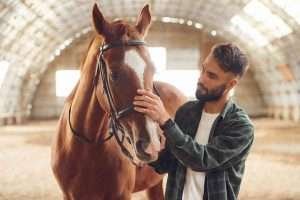 As horses age, they may become more susceptible to certain health issues, some of which are common. Being aware of these age-related concerns can help horse owners provide proactive care and seek veterinary assistance when necessary.
As horses age, they may become more susceptible to certain health issues, some of which are common. Being aware of these age-related concerns can help horse owners provide proactive care and seek veterinary assistance when necessary.
Dental Health: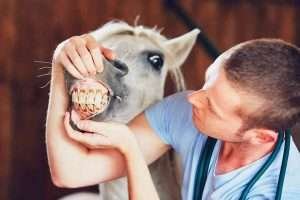
Dental issues, such as worn or missing teeth, can impact a horse’s ability to chew and digest food properly. Regular dental check-ups and appropriate dental care are essential for older horses.
Joint Problems:
Arthritis and other joint-related conditions become more common in aging horses. Adequate exercise, joint supplements, and veterinary guidance can help manage these issues.
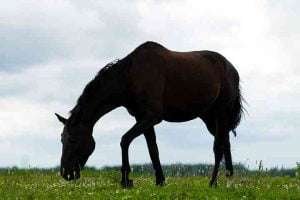 Weight Management:
Weight Management:
Older horses may have difficulty maintaining weight due to changes in metabolism and dental health. Providing a balanced diet, regular monitoring, and adjustments to feed and forage can support their nutritional needs.
Cushing’s Disease:
Cushing’s disease, or pituitary pars intermedia dysfunction (PPID), is a hormonal disorder commonly seen in older horses. Monitoring for symptoms and consulting with a veterinarian for proper management is crucial.
Health and Well-being of Older Horses
To ensure the well-being of older horses, specific considerations and care practices should be implemented:
Regular Veterinary Examinations:
It is always recommended that scheduling routine check-ups with a veterinarian to monitor overall health help address any issues promptly and discuss preventive measures.
Balanced Diet:
Horse owners should understand the importance of a balanced diet especially when it comes to Old horses, they should provide a diet tailored to the nutritional needs of older horses, including quality forage, balanced concentrates, and appropriate supplements.
Note: Always consult with an equine nutritionist for personalized feeding recommendations.
Dental Care:
Like all young horses, regular dental check-ups and floatings are vital to maintaining proper dental health and facilitating effective chewing and digestion of old horses.
Exercise and Mobility:
Although old horses lack stamina, regular and low-impact exercise helps maintain muscle tone, joint flexibility, and overall well-being of old horses. Adjust exercise routines based on the horse’s capabilities and any health concerns.
 Comfortable Living Environment:
Comfortable Living Environment:
Old horses should have access to a clean, safe, and comfortable living environment. Adequate shelter, proper footing, and appropriate bedding can give them comfort and a sense of peace and care.
 Social Interaction:
Social Interaction:
Horses are social animals, and interaction with companions can positively impact their mental well-being. Especially old horses, “THEY NEED YOUR ATTENTION” so whenever possible, provide opportunities for socialization with equine companions.
To address age-related changes horse owners should learn. By providing appropriate care, regular veterinary attention, and a supportive environment, horse owners can help their aging equine companions enjoy a comfortable and fulfilling life.
Horse Care and Management
Taking proper care of horses is crucial for promoting their longevity and quality of life. Here are some essential best practices to consider:
 Regular Grooming:
Regular Grooming:
Grooming helps maintain a horse’s coat, skin health, and overall cleanliness. It also allows for early detection of any skin issues or injuries.
Hoof Care:
Regular hoof trimming and shoeing, as needed, ensure proper hoof health and minimize the risk of lameness or other foot-related problems.
Hydration and Clean Water:
Providing access to clean and fresh water at all times is essential for a horse’s overall health and well-being. Monitor water intake, especially during hot weather or increased physical activity.
Proper Shelter:
Horses require shelter that protects them from harsh weather conditions, such as extreme heat, cold, rain, or wind. Adequate ventilation and space are also crucial for their comfort.
Pasture Management:
Maintain well-maintained and safe pastures, free from toxic plants and hazards. Rotate pastures regularly to prevent overgrazing and maintain optimal pasture health.
We encourage horse owners to visit our Social Media Pages, we are committed to helping this lovely creature so we post daily short tips there for their well-being.
Balanced Diet and Proper Nutrition
A horse’s diet plays a significant role in its overall health and longevity. A few guidelines can help you provide a balanced diet to your equine friend:
Forage:
High-quality forage, such as grass or hay, should form the basis of a horse’s diet. Ensure access to clean, fresh, and appropriate forage at all times.
Concentrates:
Depending on the horse’s age, activity level, and nutritional needs, complement the forage with balanced concentrates, including grains, pellets, or complete feeds. Consult with an equine nutritionist for specific recommendations.
Essential Nutrients:
Horses require essential nutrients, including proteins, vitamins, minerals, and fats, to support their overall health. Ensure the diet meets these nutritional requirements.
Feed Schedule:
Establish a regular feeding schedule and provide consistent amounts of feed to promote healthy digestion and prevent overeating.
Exercise and Mental Stimulation
Exercise and mental stimulation are vital for a horse’s physical and mental well-being. Consider the following:
Turnout:
Allow horses ample turnout time in a safe and secure environment to encourage natural movement and socialization.
Exercise Routine:
Develop a regular exercise routine that includes a mix of activities, such as riding, lunging, or groundwork, tailored to the horse’s abilities and fitness level.
Environmental Enrichment:
Provide mental stimulation through the use of toys, treat puzzles, or access to different environments to prevent boredom and encourage natural behaviors.
Healthcare and Regular Veterinary Check-ups
Preventive healthcare is key to maintaining a horse’s health and catching any potential issues early on. Follow these practices:
Vaccinations:
Stay up to date with recommended vaccinations to protect horses against common diseases.
Deworming:
Develop a deworming schedule in consultation with a veterinarian to prevent parasite infestation and ensure optimal intestinal health.
Dental Examinations:
Schedule regular dental check-ups and floating to address any dental issues and maintain proper chewing and digestion.
Routine Veterinary Check-ups:
Arrange routine veterinary visits for general health assessments, vaccinations, and dental care, and to address any specific concerns.
Safe and Comfortable Living Environment
Horses thrive in a safe and comfortable living environment. Consider the following:
Pasture Safety:
Regularly inspect and maintain fences, gates, and other enclosures to prevent accidents and injuries.
Bedding and Stall Maintenance:
Keep stalls clean, well-bedded, and properly ventilated to promote respiratory health and prevent issues such as ammonia buildup or thrush.
Temperature Control:
Provide adequate ventilation and temperature control in barns or shelters to prevent heat stress or extreme cold.
Addressing Age-Related Health Issues
As horses age, they may be prone to specific health issues. Stay vigilant and take appropriate measures:
Faq’s
Horses have an average lifespan of around 25 to 30 years. However, individual horses may live shorter or longer depending on various factors, including breed, genetics, and care.
Yes, certain factors can influence a horse's lifespan. For instance, smaller horse breeds tend to live longer than larger breeds. Additionally, well-cared-for horses with proper nutrition, regular exercise, and regular veterinary care often have a better chance of living a longer life.
Several factors can influence a horse's lifespan, including breed and genetics, size and body type, care and management, nutrition and diet, exercise and activity level, veterinary care, and environmental factors. Each of these elements plays a role in determining how long a horse lives.
Yes, there are certain horse breeds that are known for their long lifespan. Examples include the Arabian, Morgan, and Icelandic horse breeds. These breeds are generally hardy, with good longevity and overall health.
As horses age, they may become more susceptible to certain health issues. Common age-related conditions include arthritis, dental problems, weight management issues, and a decline in immune function. Regular veterinary check-ups and proactive management can help address these concerns and maintain a horse's quality of life.
Final Thoughts:
 As responsible horse owners and enthusiasts, it is our duty to prioritize the well-being and longevity of our equine companions. Proper care, nutrition, exercise, veterinary care, and a safe environment are essential for horses’ overall health and longevity. Regular monitoring, proactive management, and addressing age-related health issues promptly can significantly impact their quality of life. Don’t forget that each horse is unique, and their needs may differ. Stay informed, consult with professionals, and adapt your care approach to suit your horse’s specific requirements. Proper care can forge a bond built on trust and companionship. Let’s commit ourselves to providing the best possible care to these incredible creatures who bring us joy, companionship, and the beauty of the equestrian world. Together, we can ensure that horses live long, healthy, and fulfilling lives, enriching our lives in return.
As responsible horse owners and enthusiasts, it is our duty to prioritize the well-being and longevity of our equine companions. Proper care, nutrition, exercise, veterinary care, and a safe environment are essential for horses’ overall health and longevity. Regular monitoring, proactive management, and addressing age-related health issues promptly can significantly impact their quality of life. Don’t forget that each horse is unique, and their needs may differ. Stay informed, consult with professionals, and adapt your care approach to suit your horse’s specific requirements. Proper care can forge a bond built on trust and companionship. Let’s commit ourselves to providing the best possible care to these incredible creatures who bring us joy, companionship, and the beauty of the equestrian world. Together, we can ensure that horses live long, healthy, and fulfilling lives, enriching our lives in return.

